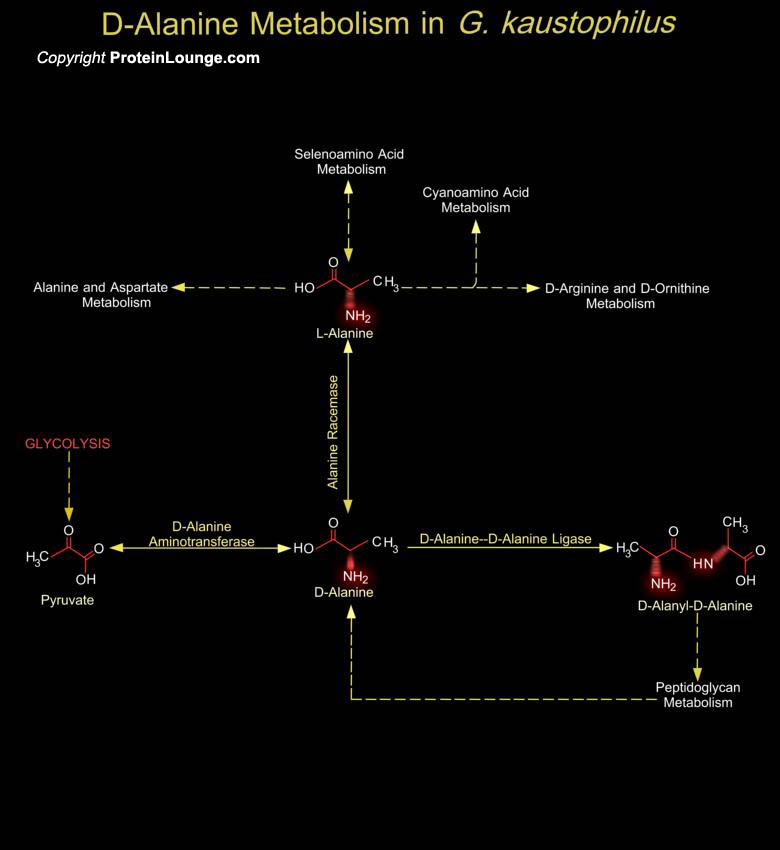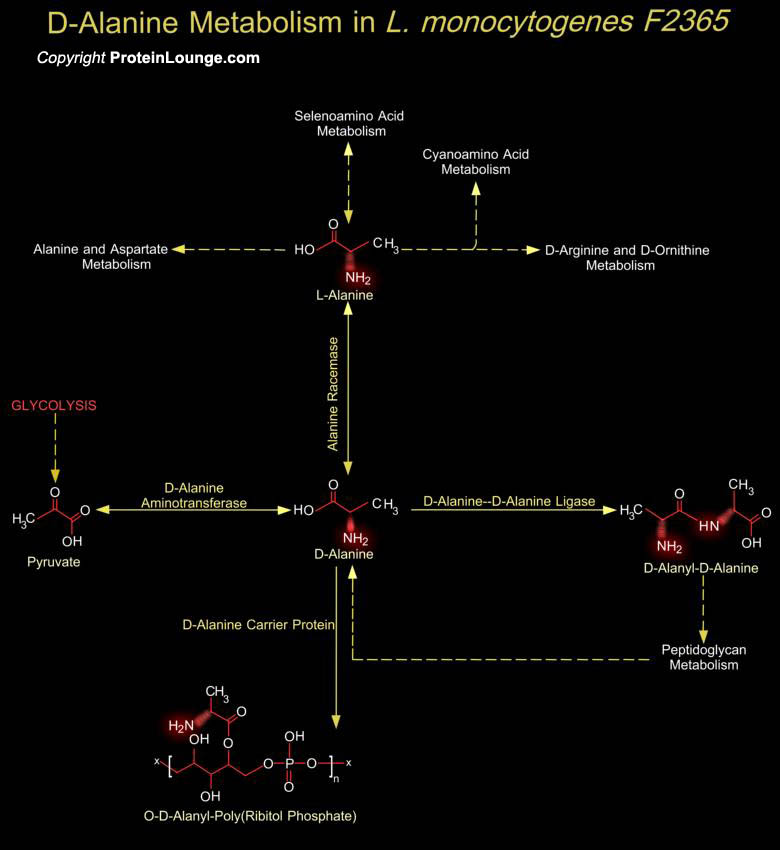Featured Pathways

Geobacillus kaustophilus HTA426, which was isolated from the deep-sea sediment of the Mariana Trench, is a thermophilic Bacillus-related species whose upper temperature limit for growth is 74 degrees Celsius (optimally 60 degrees Celsius). It is known that there are at least 12 other thermophilic Geobacillus species, which have been reclassified from the genus Bacillus (Ref.1).The[..]

The bacterial genus Listeria is currently taxonomically subdivided into six species: L. monocytogenes, L. seeligeri, L. ivanovii, L. innocua, L. grayi, and L. welshimeri. Two of the species are pathogenic, causing the disease listeriosis. L. innocua is widespread in the environment and in food. The only phenotypic characteristic that classically distinguishes L.[..]

Lactic acid bacteria are a heterogeneous group of microorganisms that convert carbohydrates into lactic acid. They comprise both pathogens (such as Streptococcus pneumoniae or Streptococcus pyogenes) and useful bacteria (such as Streptococcus thermophilus and Lactococcus lactis (L. lactis), which were used for millennia in milk fermentation). In nature,[..]

Listeria monocytogenes(L. monocytogenes) is a Gram-positive facultative intracellular bacterial pathogen that elicits a strong cellular immune response following infection and therefore has potential use as a vaccine vector. However, while infections by L. monocytogenes are fairly rare and can readily be controlled by a number of antibiotics, the organism can nevertheless[..]

Group-A Streptococcus pyogenes remains an important human pathogen responsible for a variety of suppurative infections, including pharyngitis, scarlet fever, impetigo, and cellulitis and for nonsuppurative sequelae, such as acute rheumatic fever, acute Glomerulonephritis, and reactive arthritis (Ref.1). S. pyogenes strains are grouped into two classes on the basis of post[..]

Listeria monocytogenes(L. monocytogenes) is a Gram-positive bacterium widely spread in nature and responsible for sporadic severe infections in humans and other animal species. This pathogen is a facultative intracellular microorganism capable of invading and surviving in most host cells, including epithelial cells and macrophages. L. monocytogenes strain F2365 (Serotype 4b)[..]

Group-A Streptococcus pyogenes remains an important human pathogen responsible for a variety of suppurative infections, including pharyngitis, scarlet fever, impetigo, and cellulitis and for nonsuppurative sequelae, such as acute rheumatic fever, acute glomerulonephritis, and reactive arthritis (Ref.1). S. pyogenes strains are grouped into two classes on the basis of post infectious[..]

Lactic acid bacteria play important roles in food conservation because of their fermentative ability and contribute to the equilibrium of the gastrointestinal tract microbiota. Lactobacillus johnsonii (L. johnsonii) is commonly found in the gastrointestinal tract and adhere to intestinal cells. Such interactions of bacteria with the gastrointestinal tract contribute to its[..]

Symbiobacterium thermophilum is a symbiotic Gram-negative and tryptophanase-positive thermophile. It is an uncultivable bacterium isolated from compost that depends on microbial commensalism. It does not grow by itself under standard culture conditions; however, when cocultured with Bacillus sp., it propagates. S.thermophilum proliferates under both aerobic and anaerobic[..]

Lactiplantibacillus plantarum (previously Lactobacillus plantarum) is a member of the facultative heterofermentative group of Gram-positive Lactobacilli that are frequently isolated from plant material and various fermented foods. Lactobacilli produce lactic acid and are used for many different things, including yogurt production and the maintenance of healthy intestinal[..]

Legionella pneumophila is the causative agent of Legionnaires' disease, which replicates as an intracellular parasite of amoebae and persists in the environment as a free-living microbe (Ref.1). D-Alanine is a necessary precursor in the biosynthesis of cell wall in this bacterium. L-Alanine is also a product of several other metabolic pathways like Cyanoamino Acid Metabolism, Selenoamino[..]

Streptococcus thermophilus is one of the most economically important lactic acid bacteria used in the manufacture of yogurt and cheeses. This bacterium belongs to the group of GRAS (Generally Recognized As Safe) bacteria which is an exception in the Streptococcus genus. S. thermophilus is used, along with Lactobacillus sp., as a starter culture for the manufacture of several important[..]




















